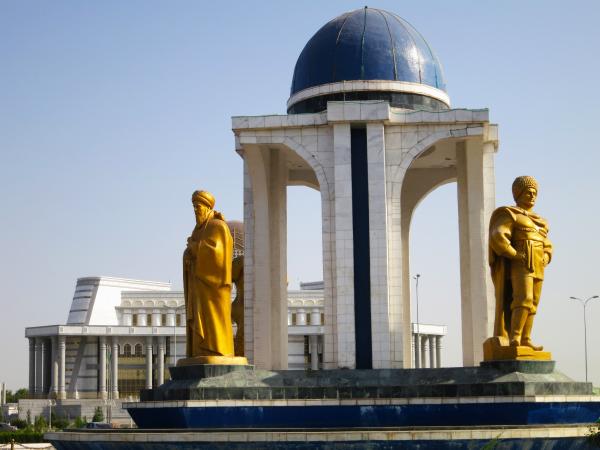Türkmenabat
Turkmenabad is the second largest city of Turkmenistan, the administrative center of one of the regions of the country.
The ancient city of Amul, a prototype of modern Turkmenabad, was known since the first centuries of our era. In those days, the city was a safe haven and a resting place for travelers on the Great Silk Road. Legend says that the name of the famous river Amu Darya came precisely from the name of the city Amul, because before the appearance of this city the river was called Oks.
The city of Amul was a kind of intersection of roads - here passed not only the “Great Silk Road”, but also the roads that led to Iran, India and Eastern Europe. The city was famous for its bazaars; there lived numerous artisans and scientists. According to Arab historians, the city was a major cultural center of the time.
In 1221, the ancient city was completely destroyed by the troops of Genghis Khan. The city received its second and more well-known name "Charjui" in 1511. At that time, not far from the ruins of the old city, the great commander Muhammad Bobur stopped, he saw the most beautiful places and four riverbeds, after that he exclaimed “Charkharjuy” (from the Persian “four channels”). The new name of the city Muhammad Bobur mentioned in his work "Baburname."
The city got its current name Turkmenabad in 1999. Previously, the city was also called Chardzhui, Chardzhou and even Chardzhev.
The city is located on the bank of Amu Darya river, 470 kilometers from the capital of Turkmenistan, Ashgabat. The climate of Turkmenabad is dry, very hot - in the summer in the vicinity of the city the air temperature reaches +51 degrees Celsius. About 700.000 people live here.
The city of Turkmenabad is surrounded by the interesting historical sites and monuments of antiquity. In its vicinity are: the site of Amul-Chardzhui, which keeps the remains of the fortress of the ruler of the ancient Amul; Astana Baba mausoleum, which was built in the 11th century AD; located on the road from Amul to Khorezm Caravanserai Dayahatyn.
Not far from Turkmenabad is located Kugitang - a natural mountainous area untouched by man. Here is the plateau of Dinosaurs, on which more than a hundred petrified dinosaur footprints are almost perfectly preserved.
In this city once lived and worked the famous poet Seyitnazar Seydi. Since 1877, river shipping has been established through the city. 70 km from the city, in the South-East Karakum desert, there is the Repetek reserve, which is the hottest place in Turkmenistan and all of Central Asia. The reserve is home to about 26 species of insects, animals and birds listed in the Red Book.

